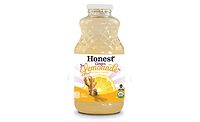Ink, coating technologies create experiences for consumers
Ink advancements aid in product integrity

The AMC historical spy drama “Turn” highlighted many of the creative practices that the revolutionaries utilized to confuse and evade the British soldiers. Among the common practices that prominently were featured was the use of invisible inks to avoid exposure should the message get into the wrong hands. Technology today has elevated the capabilities of inks not just for communications, but also for branding aspects within the consumer packaged goods market.
Beverage-makers today are turning to inks and coatings to create a deeper purpose and connection with consumers and the products they purchase, experts note.
“The power of specialty inks is in their ability to create ‘theater-in-the-hand’ for a consumer during every purchase,” says Patrick Edson, chief marketing officer for CTI, Colorado Springs, Colo. “We change consumers’ behavior by the power of our communication and their experience using our product. Specialty inks entertain, protect, inform, surprise, empathize and protect quality. Glow-in-the-dark ink provides a consumer the reason to choose a beverage for Halloween; photochromic is a reason to select a brand during summer barbecues; thermochromic is valuable because every day is a good day to ensure the beverage is cold, and tamper-evidence inks protect consumers and stop counterfeiting.”
In addition to branding aspects, suppliers note that beverage-makers also want inks that clearly communicate food safety and efficacy aspects.
“Quality inks deliver excellent printer and code performance,” says Sherry Washburn, business unit manager for supplies at Wood Dale, Ill.-based Videojet. “Inks formulated for coding and marking allow beverage manufacturers to identify dates, lot and batch numbers, and other manufacturing information directly on bottles, cans, pouches, boxes, cases and pallets. Unique codes fight product diversion to unauthorized channels and counterfeiting. Clean, clearly printed information like ‘best-by’ dates can enhance a consumer’s perception of the brand.”
Conceptions visualized
Although technologies like thermochromic inks have been around for many years, investments have been made to expand the color-changing inks product array.
“There are more color options available in thermochromic to match a brand’s color architecture, the development of solvent thermochromic inks systems, and a dramatic improvement in technology to create printable freeze, thaw and warming alerts for vaccines and food,” CTI’s Edson explains.
Another focus for CTI has been the ability to provide tamper-evidence to ink technology. “The primary requirement of tamper technology is to keep evolving to respond to new threats from criminals,” Edson says. “CTI has led with three critical advancements: Tamper Freeze, the ability to detect tampering from cryogenics, such as liquid nitrogen and freeze spray; Tamper Heat inks that dramatically improve resistance to over-print varnishes, adhesives and high-heat burn out; and Tamper Fluorescence, a new fluorescent ink that prints clear and only shows up under a black light.
“This is an improvement from incumbent technology thanks to a breakthrough in making it easy to print and using less ink,” he continues.
Videojet’s Washburn further expands on the ways that inks can help protect product integrity. “To stay a step ahead of counterfeiters, beverage manufacturers have become savvier,” she says. “They’re moving beyond invisible fluorescing inks as counterfeiters have become more skilled at evading and duplicating them. The beverage industry is looking for more advanced solutions, like SigNature molecular inks, to help them protect their brands. Unique to each manufacturer, these inks are created with the addition of a unique and secure molecular tag to facilitate the traceability of products and packaging.”
What CTI’s Edson considers to be one of the more exciting advancements within inks is the “warming alerts” that can be used on labels for beverages like wine and juice.
“Too much heat can have a catastrophic impact on quality,” he explains. “CTI developed a printable sensor ink that can be activated at the time of bottling and create a permanent record in the distribution process to show if a product has gotten too warm. CTI’s BlindSpotz warming alert technology has been repurposed from tracking the safety of blood bags.
“Another big breakthrough is in supporting beverages that use high pressure processing — 87K psi for three minutes to pasteurize a product with pressure — can now be validated at the package level,” Edson continues. “HPP validation is printed clear on an individual juice bottle and a symbol then appears when the target pressure level is achieved.”
Edson expects companies will continue to invest in the advancements of inks and the capabilities it can offer brand owners.
“Traditional ink companies will rely more on partnerships to develop new technologies for specialty applications; increased options of printing specialty inks to include solvent applications and the ability to inspect individual packages for tampering or quality abuse,” he says. BI
Looking for a reprint of this article?
From high-res PDFs to custom plaques, order your copy today!







